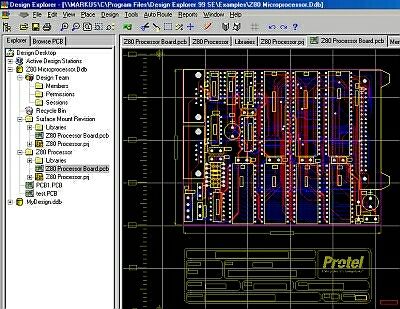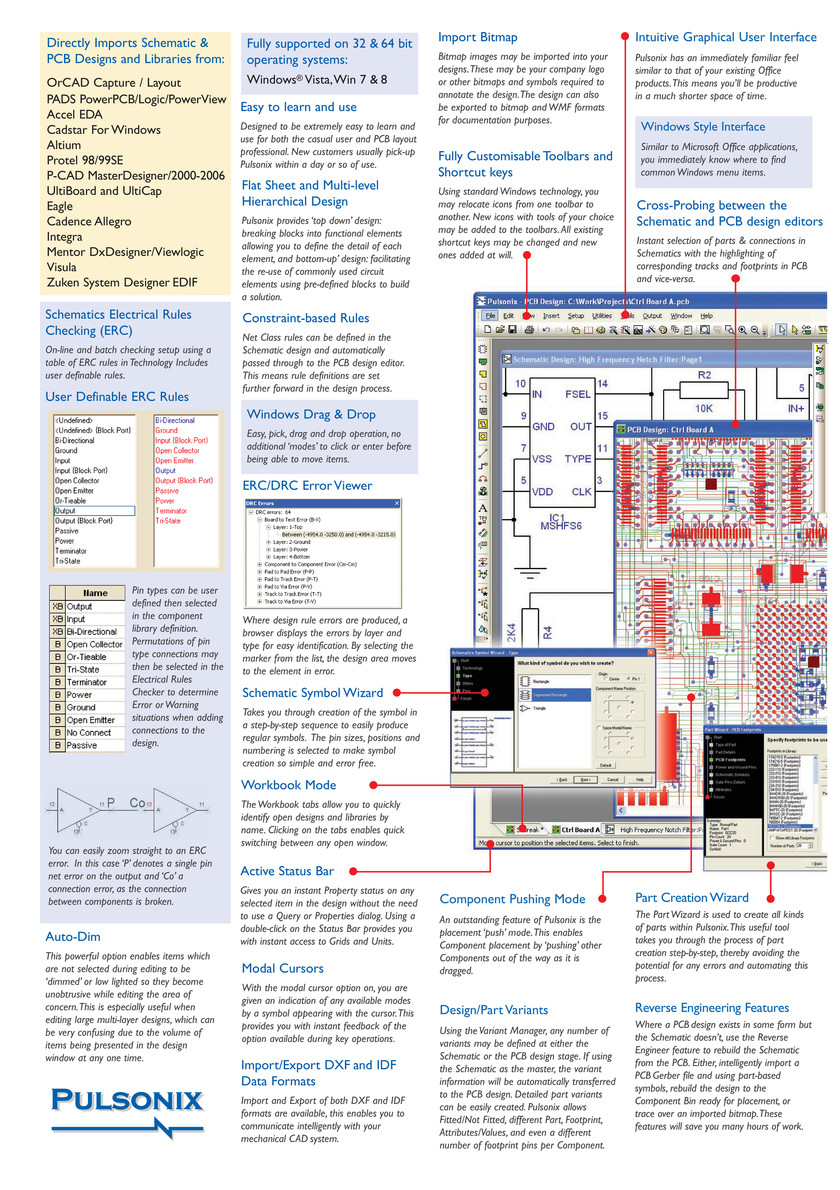

A Design Workspace (*.DsnWrk) is used to cluster related projects together, so you could use a Design Workspace for all projects for one client, all boards in one product, and so on. The project file itself is an ASCII file that stores project information, such as links to the documents that are in the project, output settings, compilation settings, error checking settings, and so on.Ībove the project level, Altium Designer uses the Design Workspace. Multiple types of projects are supported in the environment, including:Īpart from script projects, a fundamental requirement is that each project targets a single implementation - for example a PCB project includes all the sources required to define a single PCB, and an FPGA project is implemented in a single FPGA. The basis of every design created in Altium Designer is a project file. In Altium Designer, all design files are stored on the hard drive. Some designers use a single DDB for each board design, others keep all revisions of a design in a single DDB, while other designers keep all board designs for the one product in a single DDB.

There is no hard and fast requirement on what is stored in a design database, or how the design documents might be grouped into folders within the design database (DDB). The database acts as a storage container, and also as a way that the designer can group project-related design files. Protel 99 SE stores all design documents inside a single design database. Design Database Become a Design Workspace & Projects The 99SE Import Wizard gives control and visibility over the process of importing a 99SE design database into Altium Designer. Altium Designer stores files on the hard drive and now include the concept of the Project. Protel 99 SE uses the design database, or DDB, to store design files.
#Protel 99se to orcad software#

^ "CAD links to disty databases gain momentum".^ "Altium Designer links to Premier Farnell's DesignLink".^ "Altium announces new publishing and version control capabilities".

"Aldec FPGA simulation added to Altium Designer".
#Protel 99se to orcad manual#
The reference manual was re-written for the American market. In 1986, ACCEL Technologies, Inc., of San Diego, California, acquired marketing and support responsibilities for the product in the U.S., Canada and Mexico. It was originally written in 1985 by Nick Martin, of Australia, and sold under the name of PROTEL-PCB. ^ "Public Release Notes for Altium Designer | Altium Designer 21 User Manual | Documentation".It also has interactive 3D editing of the board and MCAD export to STEP. It integrates with several component distributors for access to manufacturer's data. Features Īltium Designer's suite encompasses four main functional areas, including schematic capture, 3D PCB design, field-programmable gate array (FPGA) development and release/data management. Altium Designer version 6.8 from 2007 was the first to offer 3D visualization and clearance checking of PCBs directly within the PCB editor. Protel DXP was issued in 2003, Protel 2004 in 2004, Altium Designer 6.0 in 2005. Protel 99 in 1999 introduced the first integrated 3D visualization of the PCB assembly. In 1998, Protel 98 consolidated all components, including Advanced Schematic and Advanced PCB, into a single environment.
#Protel 99se to orcad windows#
In 1991, Protel released Advanced Schematic and Advanced PCB 1.0 for Windows (1991–1993), followed by Advanced Schematic/PCB 2.x (1993–1995) and 3.x (1995–1998). In 1987, Protel launched the circuit diagram editor Protel Schematic for DOS. The product became available in the United States, Canada, and Mexico beginning in 1986, marketed by San Diego-based ACCEL Technologies, Inc. Protel PCB was marketed internationally by HST Technology since 1986. Originally it was sold only in Australia. It has roots back to 1985 when the company launched the DOS-based PCB design tool known as Protel PCB (which later emerged into Autotrax and Easytrax). Altium Designer was originally launched in 2005 by Altium, known at the time as Protel Systems Pty Ltd.


 0 kommentar(er)
0 kommentar(er)
